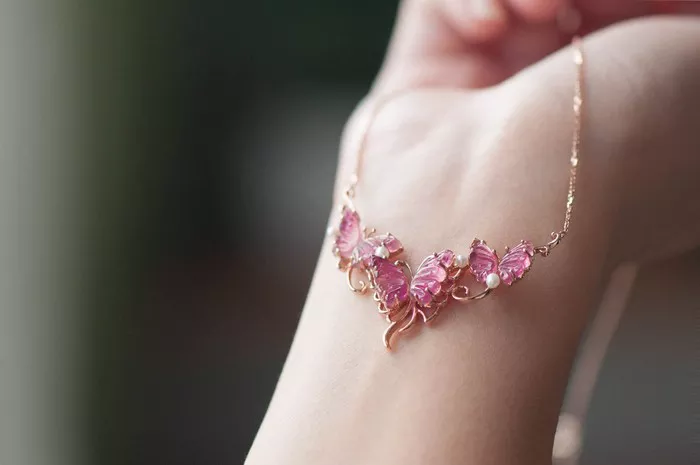Black tourmaline, also known as schorl, is a member of the tourmaline family, which is renowned for its diverse color palette ranging from pink and green to black. Among the various hues, black tourmaline holds a unique position due to its striking appearance and powerful metaphysical properties, which have made it a favored gemstone for jewelry and healing practices. This article aims to delve into the origins of the finest black tourmaline, exploring the geological conditions, mining locations, and the characteristics that make these gemstones so special.
Geological Formation of Black Tourmaline
Black tourmaline forms under specific geological conditions, primarily in igneous rocks such as pegmatites. Pegmatites are coarse-grained igneous rocks that can contain large crystals of various minerals, including tourmaline. The formation of black tourmaline often involves the interaction of boron, aluminum, silicon, oxygen, and trace elements like lithium, sodium, potassium, magnesium, iron, and manganese.
The crystallization process of tourmaline is complex and requires high temperatures and pressures, typically found in volcanic or tectonically active regions. As magma cools and crystallizes, the unique chemical composition and slow cooling rates contribute to the formation of large, well-formed tourmaline crystals. Black tourmaline, in particular, owes its dark color to the presence of iron and manganese impurities within its crystal structure.
Mining Locations of Fine Black Tourmaline
Several regions around the world are known for producing high-quality black tourmaline. Each location offers unique geological conditions that result in gemstones with distinct characteristics. Here, we will explore some of the most renowned mining areas.
1. Brazil
Brazil is one of the world’s leading producers of tourmaline, including black tourmaline. The Minas Gerais state, in particular, is famous for its pegmatite deposits that yield fine crystals. The region’s rich mineralogy is a result of ancient volcanic activity and tectonic movements, which created favorable conditions for tourmaline formation. Brazilian black tourmaline is often praised for its deep, uniform color and high clarity.
2. Madagascar
Madagascar is another gem-rich country, known for producing a variety of tourmaline colors, including black. The island’s unique geological history, including volcanic eruptions and tectonic plate interactions, has resulted in numerous pegmatite deposits. Malagasy black tourmaline is valued for its vivid dark hues and often exhibits interesting inclusions and patterns within its crystals.
3. Sri Lanka
Sri Lanka, also known as the “Gem Island,” is renowned for producing a wide range of gemstones, including high-quality black tourmaline. The country’s gemstone deposits are primarily found in metamorphic rocks resulting from ancient tectonic activity. Sri Lankan black tourmaline is distinguished by its saturation and sometimes cat’s-eye effect, caused by parallel internal inclusions that reflect light in a distinctive manner.
4. United States
In the United States, California and Maine are notable for their tourmaline deposits. The California pegmatites, particularly those in the San Diego County and near the Tule Lake area, have yielded fine black tourmaline crystals. Maine’s tourmaline deposits are found in metamorphic rocks associated with ancient volcanic activity. While not as prolific as some other regions, the U.S. produces tourmaline that is highly valued for its unique characteristics and domestic origin.
5. Africa
Several African countries, including Nigeria, Kenya, and Tanzania, also produce black tourmaline. The continent’s rich geological diversity, including volcanic and tectonic activity, has resulted in numerous pegmatite deposits. African black tourmaline is often noted for its deep, rich colors and sometimes unusual crystal shapes.
Characteristics of Fine Black Tourmaline
The finest black tourmaline is characterized by several factors that set it apart from lesser-quality gemstones. Understanding these characteristics is crucial for jewelry appraisers and enthusiasts alike.
1. Color and Clarity
Black tourmaline’s color can range from deep, near-black hues to lighter shades with brown or gray tones. The finest examples exhibit a rich, uniform black color with minimal impurities or inclusions. Clarity is another critical factor, with fewer internal flaws or inclusions contributing to a gemstone’s appeal.
2. Cut and Polish
The way a black tourmaline is cut and polished can significantly enhance its beauty and value. Skilled gem cutters aim to maximize the gemstone’s natural brilliance and minimize any imperfections. Popular cuts for black tourmaline include rounds, ovals, cushions, and cabochons, each designed to showcase the gemstone’s unique characteristics.
3. Carat Weight
Like many gemstones, the size and weight of a black tourmaline can affect its value. Larger, well-formed crystals are often more rare and thus more valuable. However, smaller gemstones can still be of high quality if they exhibit excellent color, clarity, and cut.
4. Origin
The origin of a black tourmaline can also play a role in its perceived value. Gemstones from renowned mining locations, such as Brazil or Madagascar, often command higher prices due to their historical significance and reputation for producing high-quality gemstones.
The Importance of Ethical Mining
As with any gemstone, the mining of black tourmaline must be approached with ethical considerations. Many mining regions face challenges such as labor exploitation, environmental degradation, and social conflict. It is crucial for consumers and jewelers to support ethically sourced gemstones, ensuring that mining activities are conducted in a responsible and sustainable manner.
Ethical mining practices involve respecting workers’ rights, ensuring safe working conditions, and minimizing environmental impact. Additionally, supporting locally owned and operated mines can contribute to economic development and community well-being in mining regions.
Conclusion
In summary, the finest black tourmaline comes from a combination of favorable geological conditions, skilled mining practices, and ethical sourcing. Whether sourced from Brazil, Madagascar, Sri Lanka, the United States, or Africa, black tourmaline offers a striking addition to any jewelry collection, with its deep hues and unique properties making it a gemstone to cherish and admire.
Related topic:


